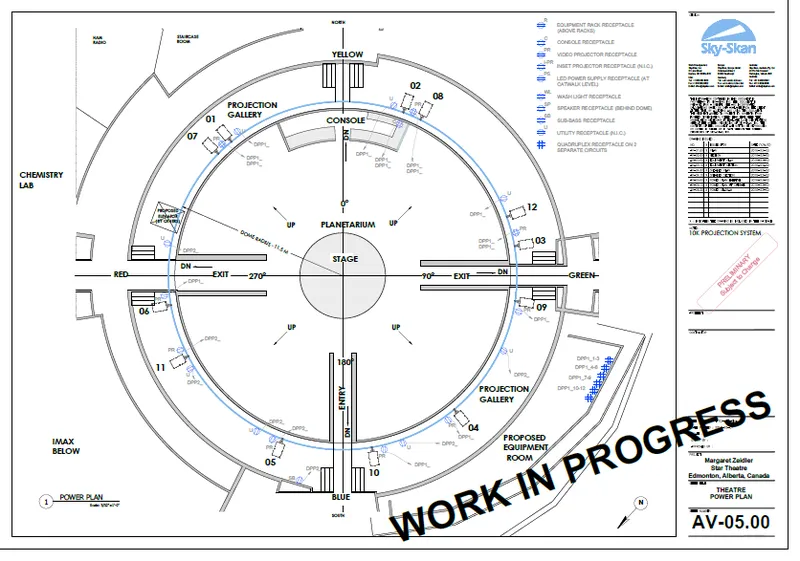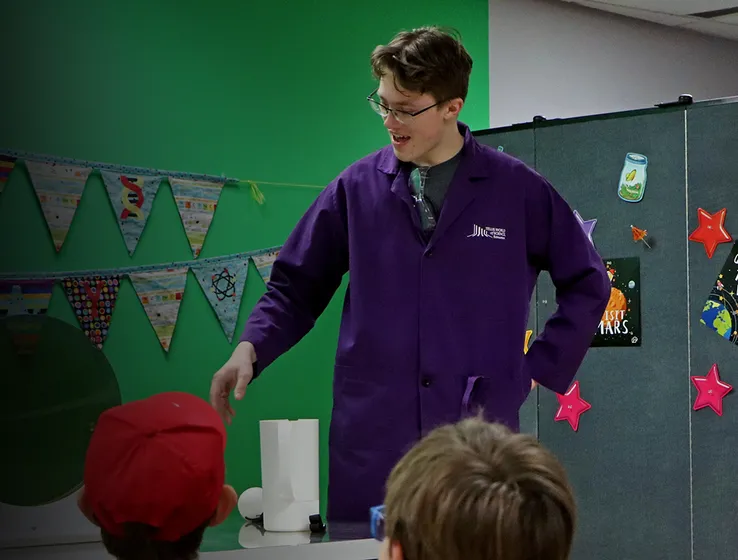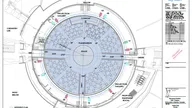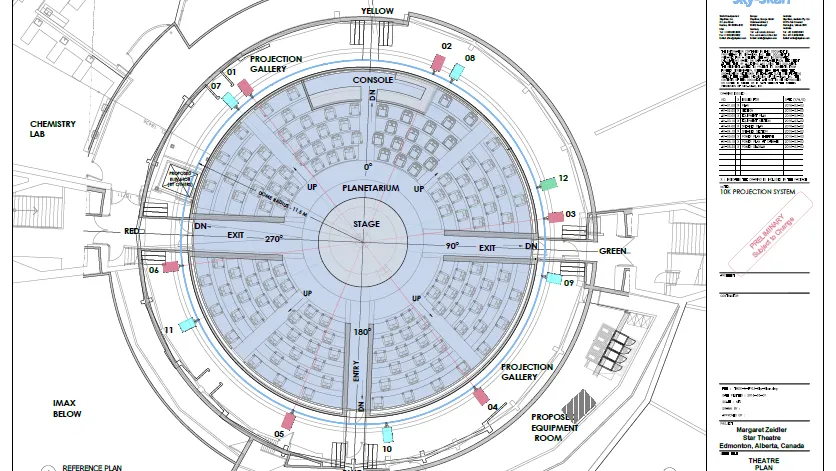First in the world
Posted:
Get Ready for the Ultimate Journey Through Time and Space!! A New Experience Awaits You in the Zeidler Dome!
Written by Frank Florian – Director, Planetarium and Space Sciences
Get Ready for the Ultimate Journey Through Time and Space!! A New Experience Awaits You in the Zeidler Dome!
The Zeidler Dome (formally the Margaret Zeidler Star Theatre), the TELUS World of Science – Edmonton’s planetarium, has undergone a complete transformation. This transformation included brand new screen panelling for the projection surface (no more unsightly water stains from the heavy rain and subsequent leaks in the building associated with the 1987 Edmonton tornado), new chairs and carpeting, new theatre lighting and audio system, a new laser light projection system and most importantly, a 10K video projection system. What, a 10K projection system you ask? Well, how does that work you may ask? First off, let’s take a look at the resolutions of the modern flat panel TV.
Most of us today have the so-called HD TV (2K or 1080P) that became popular to consumers a few years back now. The resolution of these TVs is 1920 by 1080, with the first number giving the horizontal resolution (or number of pixels across) and the second number giving the vertical resolution (number of pixels high). A pixel is just a picture element, one dot on the screen. An HD display like this then displays 2,073,600 pixels (which is just 1920 multiplied by 1080) on your screen to create the image. The new 4K TVs that are now replacing the 1920 by 1080 (1080P or 2K TVs) on the consumer market have another resolution, they have 3,840 x 2,160 resolution (which is not quite 4K but it is close). At this “4K” resolution you now have 8,294,400 pixels across the TV to make the image, which is four times higher in pixel concentration than the now older 1080P. This is all fine, but how do you get 10K resolution in a planetarium theatre if most projectors on the market are limited to 4K output resolution? The answer to that question is that you use more projectors and seamlessly edge-blend them together to give you the higher resolution. In the Zeidler Dome we are using 12 Sony VPL-GTZ270 4K laser phosphor projectors with a native resolution 4,096 x 2160 each. These projectors are then strategically located around the theatre’s projection area (called the cove in planetarium lingo). [image of projector layout in the theatre by Sky-Skan Inc.] As we are dealing with a hemispherical projection surface and not a flat screen, the meridian resolution, that is, from one side of the dome, through the zenith (top of the theatre) to the other side of the theatre will be 10K resolution. With this in mind the number of pixels on the Zeidler Dome will then be about 78,500,000 pixels (Area of Dome = . This is approximately ten times the resolution of a 4K display!
At present most pre-recorded full dome shows available are created from a dome master [image of dome master] which is a 4K x4K image or an 8K x 8K image, a square area that has a circular image in the centre. Both of these pre-recorded shows will look awesome on a 10K theatre projection system. However, where the system will really shine is when we use the theatre’s real-time astronomical computer software, which can output at 10 K native resolution, to display stars, planets and multitude of other visuals on the dome. This will create quite the impact in visual quality of the images and make a lasting impression on the viewer. Over time, other planetariums will catch up and go 10K, 12K and even more as projection technology changes over the years. But for now, we will be the first 10K planetarium theatre in the world! So, let’s begin your journey today!

Related Articles


Food Chain Reactions
How Climate Change is Impacting Canada's Lakes


It Is Ice to See You
How Seasonal Connections Are Affected by Climate Change


Getting to the Core of Climate Change
A Look at How Refrigerants Are Affecting Our Environment through Ice Cores
Related Articles


Food Chain Reactions
How Climate Change is Impacting Canada's Lakes


It Is Ice to See You
How Seasonal Connections Are Affected by Climate Change


Getting to the Core of Climate Change
A Look at How Refrigerants Are Affecting Our Environment through Ice Cores




